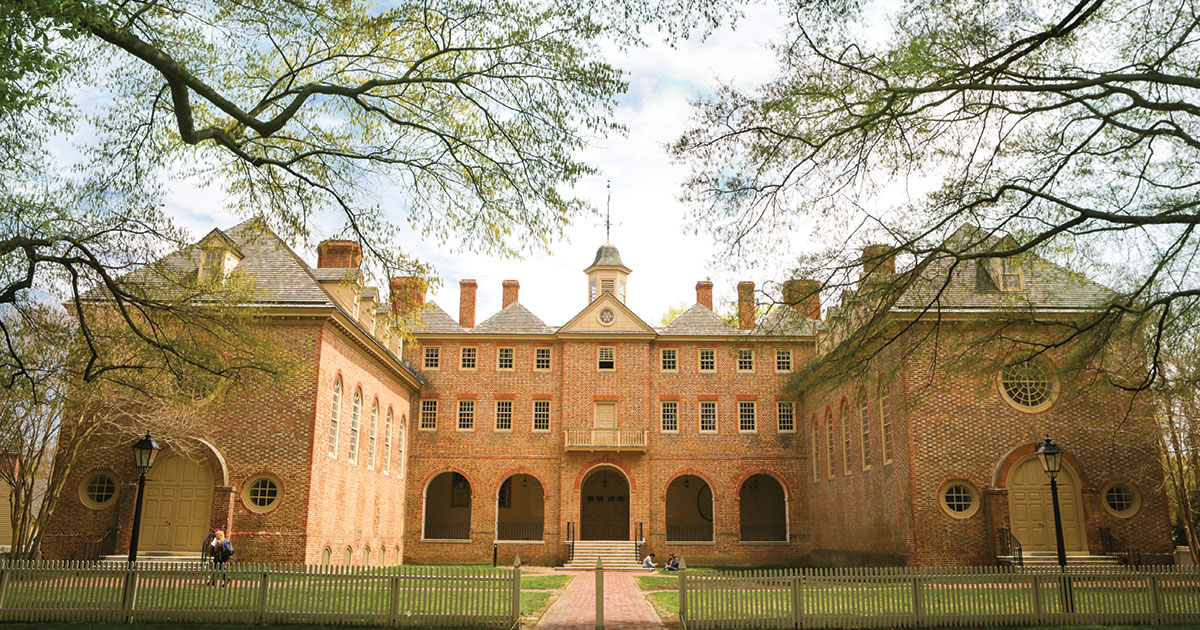Road to 40 Percent
For 35 years, Bell Society members David T. Croall ’77 and Gail Borgatti Croall ’77 have given consecutively to the university. David is the new chair of the Annual Giving Board of Directors, an active class ambassador as well as a member of the Campaign Steering Committee. While at William & Mary, David majored in history and economics and was recognized as a Phi Beta Kappa and Phi Alpha Theta History scholar.
We recently sat down with him to discuss his new role as the chair of the Annual Giving Board and the importance of the university achieving 40 percent undergraduate alumni participation.
Please tell us why you have stayed connected to William & Mary. What does William & Mary mean to you?
I met the love of my life (Gail) at W&M, and for both of us the undergraduate experience was very special. Both of us feel that W&M is not just where we went to school; it is a big part of who we are. We both maintained relationships with our honors thesis advisors long after graduation (mine was history professor emeritus Craig Canning). Staying connected was more difficult after we moved to Cincinnati – but we have always managed to make the “5-“ and “0-year” reunions. For me, joining the Annual Giving Board was a way to get reconnected and to “force” a couple of trips to campus every year. It always feels like home.
Now that you have assumed the role as the chair of the Annual Giving Board of Directors, can you please share your vision for the next year?
The vision is set by the For the Bold campaign, and I am confident that we will continue to build on the momentum that we have established over the last several years in annual giving. We will need to set new records just about every year as we push forward to the 40 percent alumni participation goal by 2020.
What motivated you to serve on the Annual Giving Board over the last few years? What accomplishments are you most proud of?
As I said, for me it was a way to establish a stronger reconnection with the university. Gail and I have always believed in the annual giving program at W&M as a way of giving back to a place that is special to us, and we know that the additional resources allow current students to have their own special undergraduate experiences. Our Annual Giving Board has transformed itself over the last several years into a “board of action” and I think that the amazing successes of One Tribe One Day and the great start for the Class Ambassador program are things that all Tribe alumni should be proud of.
In your opinion, how do you think the university will achieve 40 percent alumni participation by 2020?
The only way we will achieve the 40 percent goal is through very hard work and with great support from our loyal alumni base. The younger alumni are the key — the classes are larger now, and the College has done a great job in recent years in educating students about the importance of private giving. But we will also need to continue to educate the not-so-young alumni (and I am certainly in that group) that the business model for the College is dramatically different than it was when we were students — and that it is critically important for each of us to support W&M financially every year, whether that means $20 per year or a more substantial annual gift. Every gift is a vote for our alma mater, and every gift counts toward that participation goal. We need to unlearn the every-fifth-year reunion gift model and build consistency with ANNUAL giving. We have made great progress, but we still have a lot of hard work ahead of us.
Why does 40 percent alumni participation matter? What single message would you like to convey to alumni about the importance of this audacious goal?
The participation rate is one very tangible measure of the depth and breadth of alumni support for a university. We are already very strong for participation among public universities, but we aspire to be in the very top tier for all universities, and 40 percent will get us there. Rankings like those in U.S. News and World Report use participation rates as one factor in their ranking systems. President Reveley is fond of saying that annual giving is the “most democratic” form of support for W&M, because everyone can be counted by making a gift of any amount each year. The single message would be that we would much rather have every alumnus and alumna give $50 every year for 10 consecutive years, than give a $500 gift in only one of those years. But of course a gift of $50 in year one, building up to $500 in year 10 is even better! But the every year part is the real key.
What role do class ambassadors play in helping achieve 40 percent alumni participation?
They will play a critical role. We will hit the 40 percent goal only through building a very strong class ambassador network. To those of you who have already signed up and trained for the role: thank you! If you are considering it, please step up and join us. I think you will find it is a great way to reconnect with a small group of classmates and to become more engaged with our alma mater. You will do a great service for our school — and I will bet that you will have some fun too.

